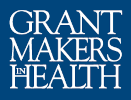2011 Annual Meeting on Health Philanthropy
The 2011 Annual Meeting on Health Philanthropy was held March 2-4, 2011 in Los Angeles, California.
The Healthy, Hunger-Free Kids Act: A Briefing for Funders
The Healthy, Hunger-Free Kids Act, which covers all federal child nutrition programs (including school meals) and helps ensure that children from low-income families receive healthy food, has been signed into law. This webinar served as an update to the related webinar GIH held before passage, and included a briefing on what is in the bill and ways for funders to support implementation, fill gaps, and otherwise promote child nutrition.
Developing State-Level Healthy Food Financing Initiatives: New Examples from California and New York
Building on Pennsylvania’s well-established Fresh Food Financing Initiative and the federal government’s recently launched Healthy Food Financing Initiative, California and New York have developed similar programs in their own states to offer tax credits, below-market rate loans, loan guarantees, and grants to organizations providing healthy foods to under served communities.
Back to Basics: Promoting Healthy School Food
With support from the Colorado Health Foundation, GIH convened the strategy session and site visit Back to Basics: Promoting Healthy School Food. This brief paper highlights some key issues that set the stage for the meeting and outlines main aspects of the discussion.
HRSA’s New Prevention Center for Healthy Weight and Healthy Weight Collaborative
On this Webinar, funders learned about the wide variety of opportunities available to collaborate with HRSA, from identifying promising practices, to convening, to funding.
Ingredients for a Healthy School Lunch Movement
From a comfortable distance, the solution to the childhood obesity problem sounds deceptively easy: children need to move more and eat healthier foods. Yet, as you examine the many causes of childhood obesity, the simple solution is not quite as simple as it sounds. Encouraging children to adopt healthy habits is challenging because unhealthy eating and sedentary lifestyles are engrained in our culture.
Back to the Beginning: Obesity Prevention in Early Childhood
Recent efforts in the field of child obesity prevention have placed emphasis on the school-age population, and with good reason. Schools present a unique opportunity to reach large groups of children on a regular basis with healthy foods and physical activity. However, about 10 percent of children come to kindergarten already obese, indicating that more attention needs to focus on the period of life before school.
The Importance (and Challenge) of Reaching Obese Adults
Over the past year, adult obesity rates continued to rise in the United States, resulting in an urgent need to lower rates. But much of what got us here will take years of extensive effort to reverse.
Pathways to Community Health: Funders Supporting Biking and Walking Trails to Promote Physical Activity
Currently, more than half of U.S. adults do not engage in enough physical activity to provide health benefits, and one in four is not active at all during leisure time. Walking, riding bikes, and playing outside are not options when neighborhoods and parks are unsafe or if there are no sidewalks or bike trails.
Innovations in the Prevention and Treatment of Diabetes
One of the most deadly and disabling consequences of America’s obesity epidemic is the precipitous increase of individuals suffering from diabetes. According to estimates by the American Diabetes Association (ADA), approximately 4,110 people are diagnosed with diabetes each day, with 1.5 million new cases diagnosed in 2005. The ADA predicts that one in three Americans born in 2000 will develop diabetes during their lifetime.
Newsletter Sign Up
Want to sign up for the GIH Bulletin? Click here to get on the list.
Contribute to the GIH Bulletin and Blog
If you are interested in contributing your story or expertise to the GIH community please review our Editorial Submission Guidelines.
